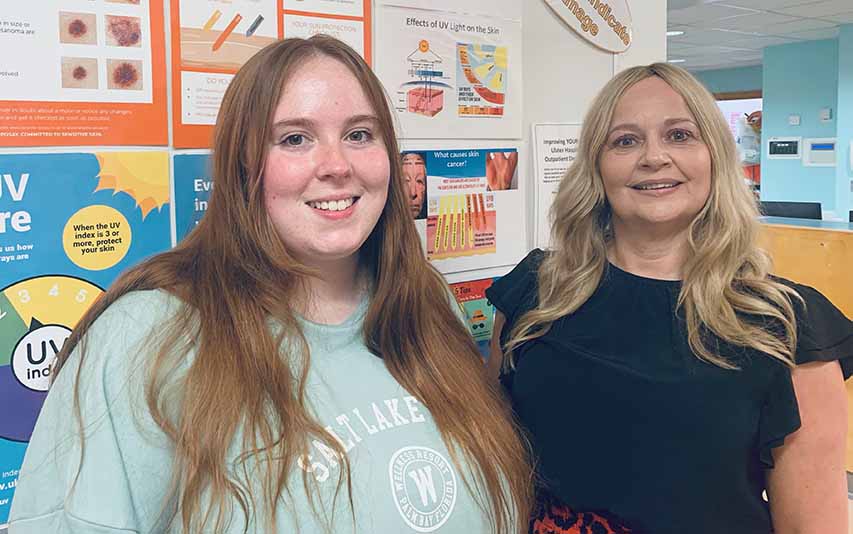Rachel (23) appeals to everyone to stay safe in the sun
With the promise of good weather in the horizon, Donaghadee’s Rachael Close has praised the South Eastern Trust’s Skin Cancer team following her shock diagnosis in April 2023.
The 23-year-old was diagnosed with Stage Two malignant melanoma, the most serious type of skin cancer, after it was located on her belly button.
The most common sign of malignant melanoma is the appearance of a new mole or a change in an existing mole.
As we mark Skin Cancer Awareness Month, Rachael explained how she initially noticed that a mole in her belly button “was a bit bigger” than she had thought. “I was referred to dermatology and then referred to plastic surgery. A biopsy was taken and it was in fact cancer.”
Rachael described how she had no family history of melanoma and underwent full surgery to remove the mass in August 2023.
“I got the all clear in September 2023 but I attend check-ups every three months and mole mapping at the Ulster Hospital every six months,” said Rachael.
Diagnosed at 22, Rachael said: “I believed there was zero chance that I would receive a skin cancer diagnosis.

“People can be quite naïve and think that it won’t happen to them until it does.
“Anyone who has a single question about anything they discover on their body my advice is to get it checked out.
“Everyone I have seen or spoke to within the South Eastern HSC Trust has been amazing.
“If I have any concerns, the team is just a phone call away and I have received such great attention. At the end of the day, you are better to be safe than sorry.”
A Skin Cancer Consultant Nurse at the Ulster Hospital Sheena Stothers detailed how in Northern Ireland the number of cases of malignant melanoma is continuing to increase year on year.
“It’s really important that we are checking our skin and taking the relevant sun protection measures. Melanoma is the seventh most common form of cancer in Northern Ireland.”
“We do have patients of all age groups affected by melanoma and it is really important that we understand that 50 per cent of melanoma comes from something that just appears on your skin.
“And the other 50 per cent may come from an existing mole, mark or a lesion on your skin.”
Sheena added that the ‘ABCDE’ skin care list “is a useful tool when it comes to checking your body for any changes with moles or lesions.”
- A is for asymmetry where the lesion may not be asymmetrical.
- B is for border when the edges of the mole may be jagged in appearance.
- C is for colour in that it may be uneven or patchy or shades of black, brown, white or even pink.
- “D is for diameter as most moles would be six millimetres in diameter which is roughly the width of a rubber at the end of a pencil and
- E is for an evolving lesion which has changed in size, shape or colour. We would encourage any person who notices any changes on their body in terms of their moles or the sudden appearance of any to contact their GP.”
Sheena said: “We would encourage any person who notices any changes on their body in terms of their moles or the sudden appearance of any to contact their GP.”
Sheena said that we can all reduce our risk to sun exposure by avoiding direct sunlight and seeking shade between the hours of 11am to 3pm, the use of UVA and UVB sun protection cream with an SPF 30+ with five stars, and covering exposed skin, wearing a wide brimmed hat, and sunglasses.
“Even though we don’t feel that we get a lot of sun here in Northern Ireland, we are still exposed to UVA and UVB rays – even on a cloudy day.
“It is important to note that anyone can develop skin cancer.
“A genetic disposition can put a person at a higher risk so early detection is key.
“Nine out of ten cases of melanoma can be prevented by staying safe in the sun.”
























